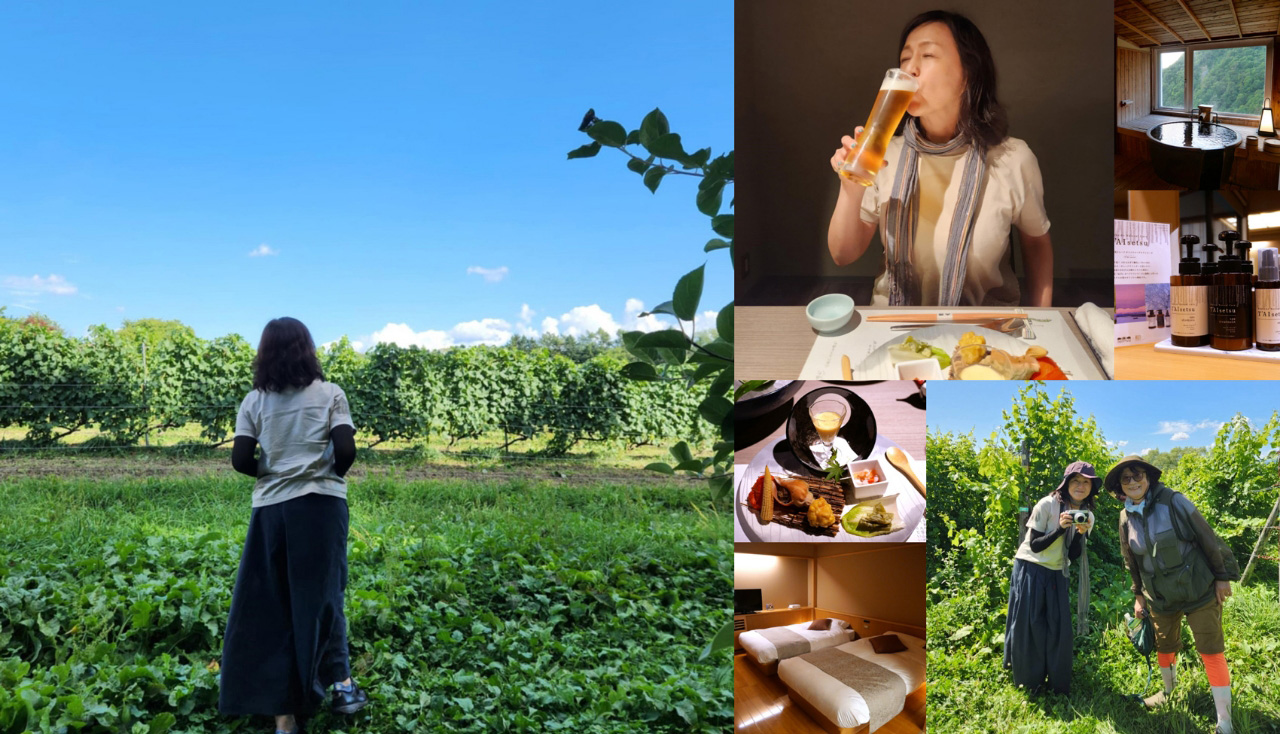
#11
My Cherished Inn: Hotel Taisetsu — Two Days That Made Me Fall in Love with Hokkaido All Over Again
Mika Osanai
Web Writer and Advisor
Web Writer and Advisor

Born and raised in Sapporo, I’ve loved going places since I can remember, and after getting my driver’s license at 18, I roamed all over Hokkaido by car.
Ever since this became my work, I tend to cram in as much as time allows—“Since I’m going that way anyway, why not stop by there?” “I should go see that person!”—I’m greedy like that (laughs).
So, when I stayed at Hotel Taisetsu ONSEN & CANYON RESORT in Sounkyo, I naturally made a few detours along the way.
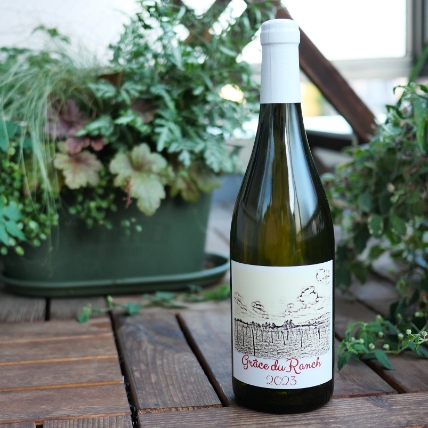
First stop before the hotel: Higashi-Toyonuma Takahashi Farm, Sunagawa Wines—the one who makes wine in the photo.
By chance, I happened to be at a shop when they brought in their very first release to pitch.
I got to taste it then and wondered, “Where in Sunagawa are their vineyards?” This time I finally made it.
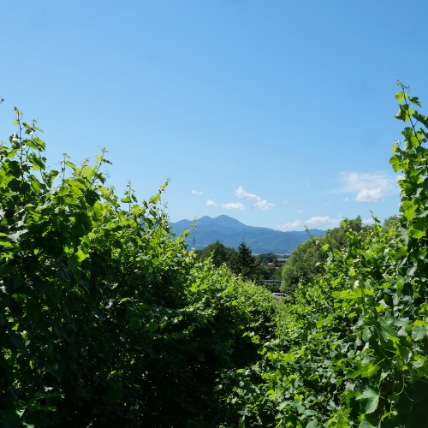
Heading north from Sapporo on the Hokkaido Expressway, there’s a vineyard on the right-hand slope just past the Naie–Sunagawa Interchange, with a view of Mt. Pinneshiri from the rows of vines.
“Weeds and shoots grow so quickly that even if we tidy up, it’s a jungle again in no time—it’s embarrassing,” laughed Ms. Rumi Takahashi, mother of the winery’s representative, Ms. Rika Takahashi, who was also out working in the vines that day.
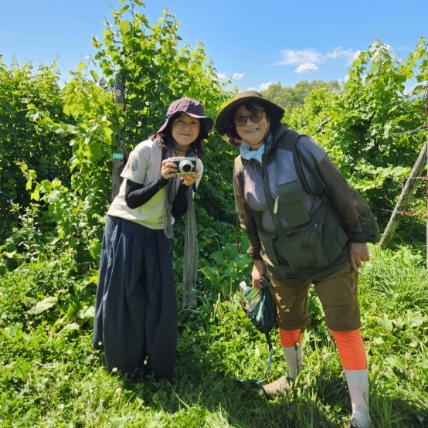
Usually, the three of them—Rika, her husband, and Rumi (let me call her “Rumi-Rumi” as everyone does!)—take care of the vineyard. “We’re always short-handed, so we’re recruiting helpers anytime! Come for harvest, too,” she said, bright and cheerful from start to finish.
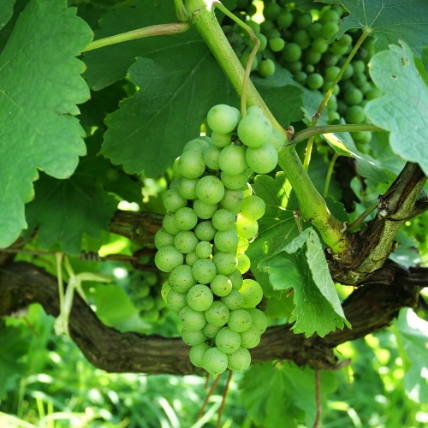
The Sauvignon Blanc was sparkling in the light. So often, the personality of the maker shines straight through into what they create. Standing there, meeting Rumi-Rumi in person, I thought, “Ah, that’s why the wine tastes so clean and uplifting—it makes you
feel brighter.” Clearly, I have to come help with harvest!
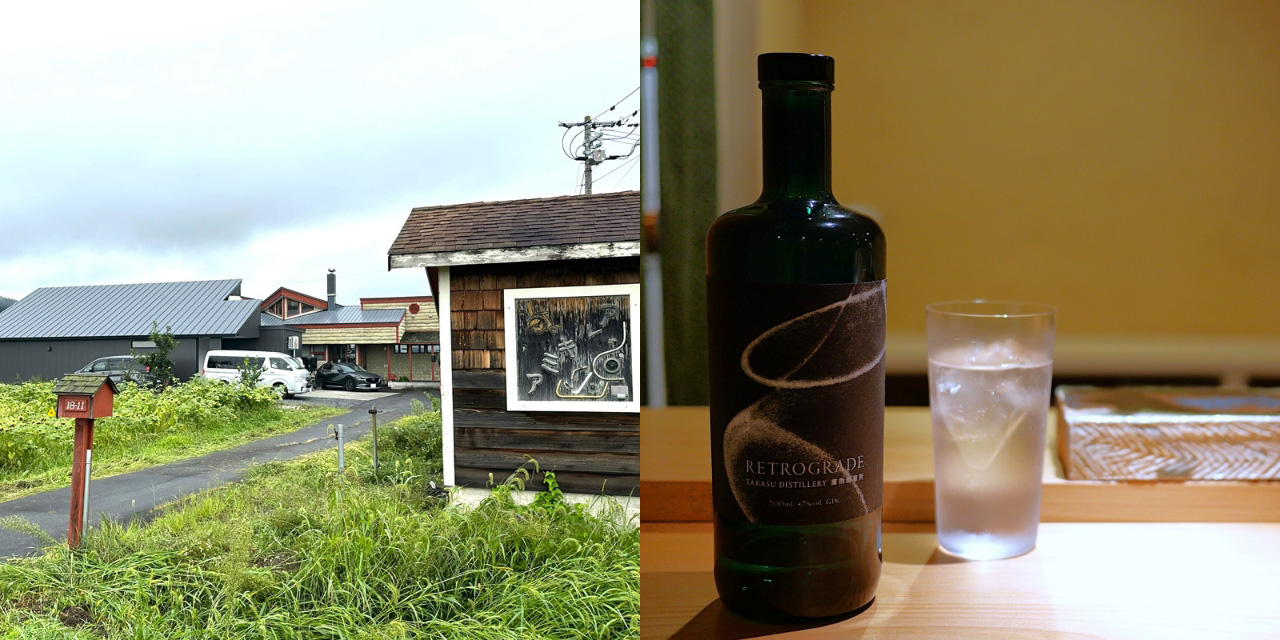
On the way back, I stopped at Takasu Distillery in Takasu Town.
It’s a relatively new distillery making a gin called RETROGRADE since 2024. I recently had a work interview with the founder, Mr. Minami, and it made me want to visit in person; he kindly made time despite a busy schedule.
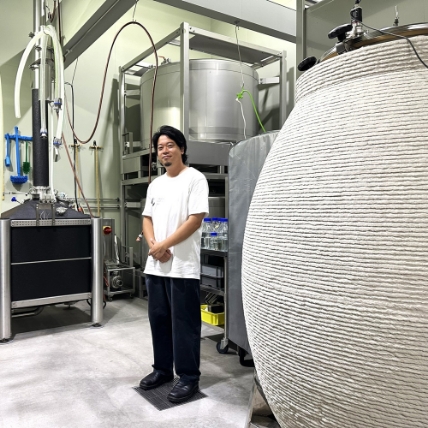
I’ve visited several gin distilleries for work, but I’d never seen vessels like these concrete, urn-like tanks.
“Stainless steel is more common, but concrete ‘breathes,’ and this egg shape encourages natural convection, so we can make things in a more natural way,” he explained.
It reminded me of qvevri, the ancient Georgian clay amphorae used in winemaking. So that’s why RETROGRADE tastes so mellow!
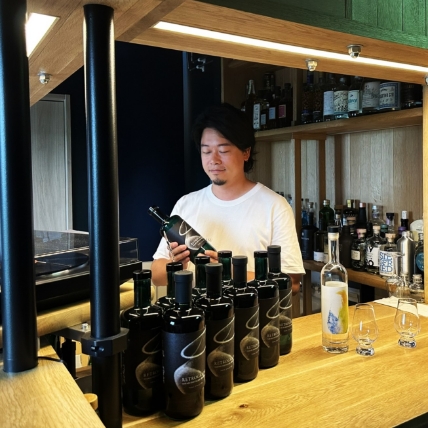
“RETROGRADE literally means ‘to go backward,’ but for us it’s a return to origins. I grew up in Takasu, a small town of about 6,500 people surrounded by fields. I wanted to make the gin I love, using local blueberries, while thinking about what we can do for the future—yet still honoring the good old things worth keeping,” he told me. I’m so glad I went.
Of course, if you drive you can’t drink—so next time, please host an overnight event nearby where we can fully enjoy RETROGRADE! Or maybe I should plan it myself (laughs).
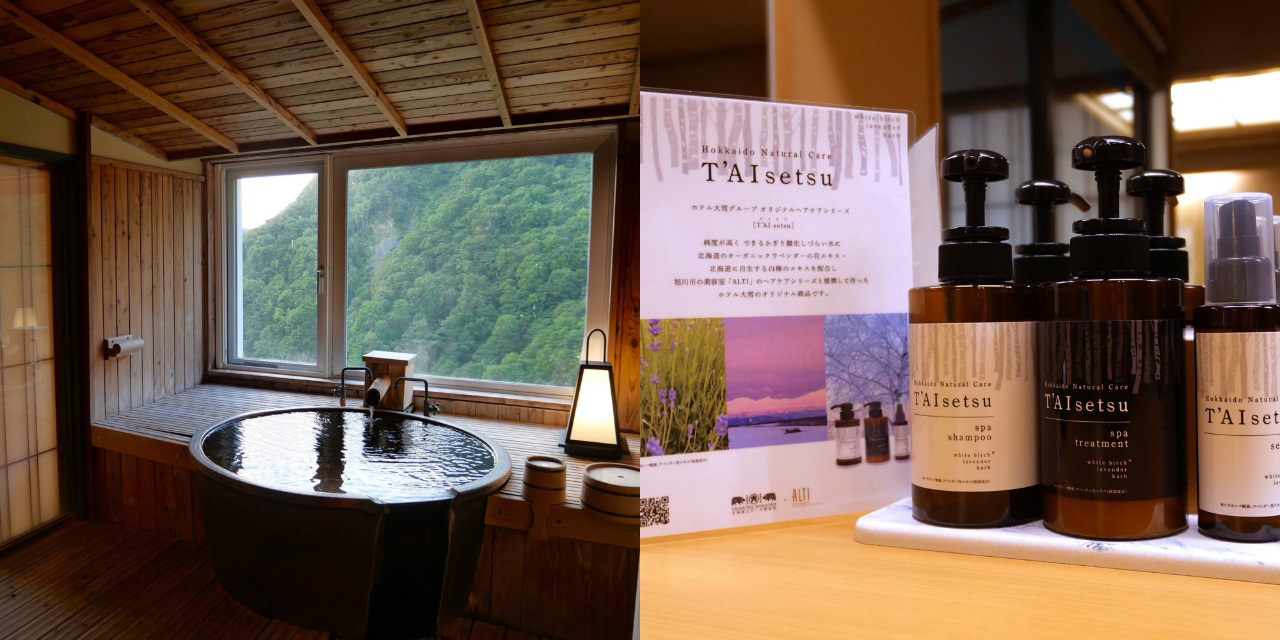
At Hotel Taisetsu, I got to stay in the top-tier Japanese Suite Yukihana, which features a private open-air bath with a view.
From the window you can look out over the Sounkyo Gorge.
The trees were still summer-green then, but I could already picture them turning red and gold soon.
Staring at the steam rising from the bath, I just couldn’t resist—I slipped right in.
Pure bliss.
The hotel’s original shampoo set in the room had a soothing fragrance too—instant relaxation.
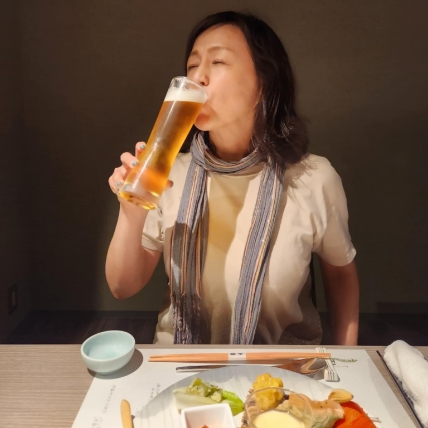
Then came dinner, which I’d been looking forward to.
Guests staying in Japanese Suite Yukihana are offered a dedicated Japanese dining venue, but the staff kindly suggested that “inankur” might suit my tastes even better—so I went with their recommendation (I’m good at taking advice). I started with my favorite, SORACHI 1984—nothing beats that first sip after a soak.
It’s like it tastes ten times better (laughs).
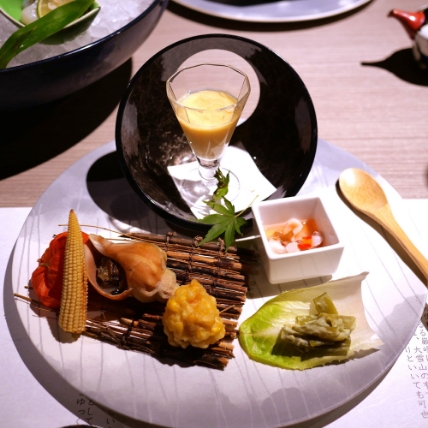
From the appetizers onward, everything was my style, and the beer kept pace (laughs). Course after course—dishes brimming with seasonality, sashimi, meat, rice, and dessert—I ate to my heart’s content.
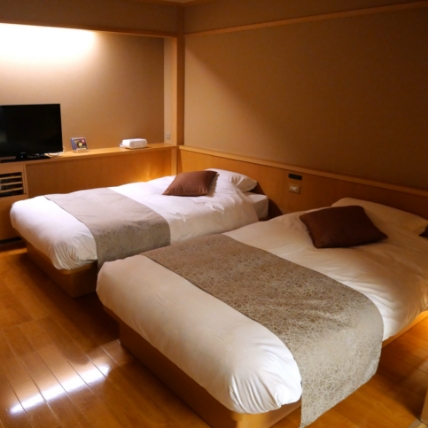
Back in the room, I slipped into the bath once more, surrendered to the massage chair, and then drifted off on the cloud-soft bed.
A blissful respite from daily life (namely, verbal sparring with my adolescent son) (laughs).
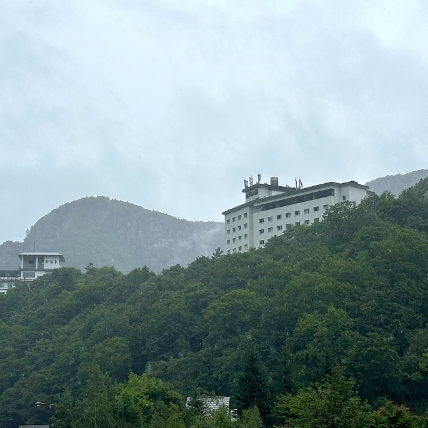
In addition to the in-room bath, Hotel Taisetsu has three public onsen bathing areas. In the morning, I headed to Taisetsu no Yu, located directly above my room.
Perched at the highest elevation among the Sounkyo Onsen hotels, the top-floor baths at Hotel Taisetsu also include a sauna—so I took my time and reached that perfect post-sauna reset.
And breakfast after that? Unbelievably good.
I probably ate twice as much as usual (laughs).
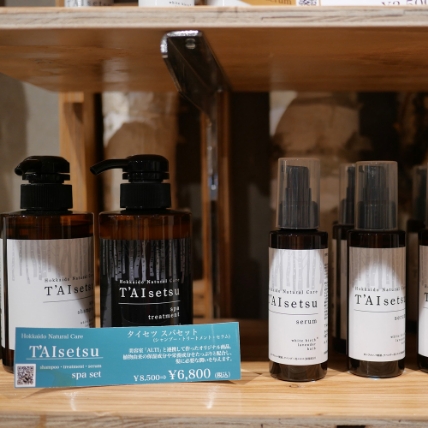
Before leaving, I stopped by the shop and found the same original shampoo set from my room. I bought it on the spot—every time I catch that scent, it’ll bring this stay right back to me.
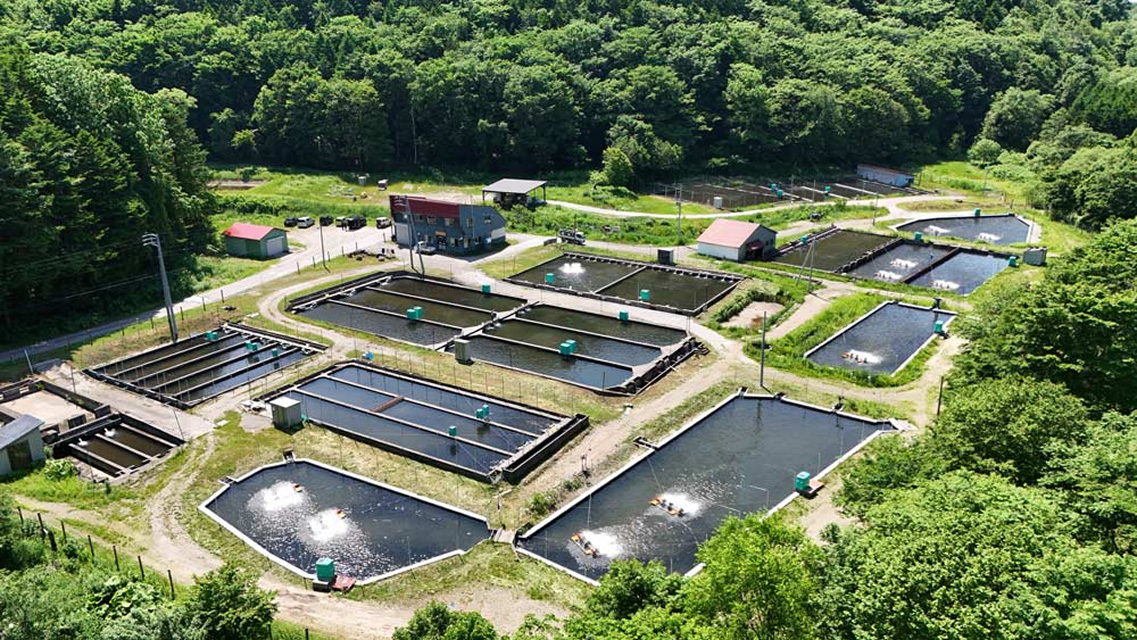
There was actually one more place I visited on this trip (yes, I know—I may have overdone it, laughs): a trout farm that raises “Hokkaido Taisetsu Salmon,” which is also served at Hotel Taisetsu. Note: photo courtesy of Oji Salmon Road Co., Ltd.
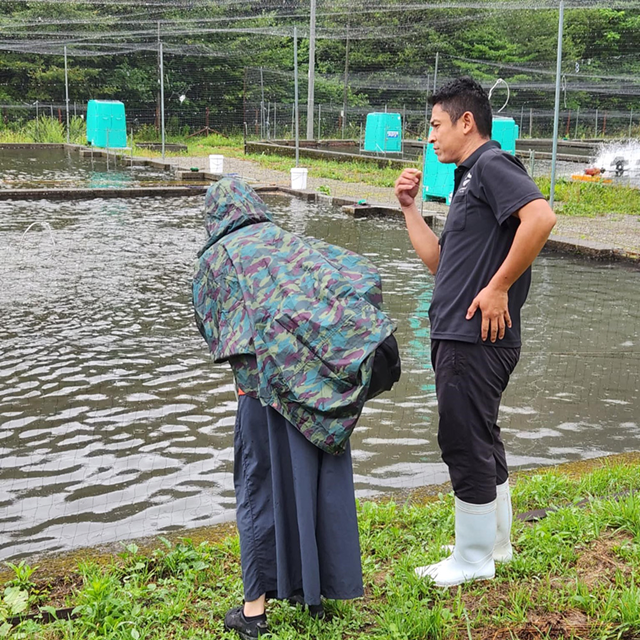
Even in less-than-ideal weather, President Imai kindly showed me around.
“The facility itself has existed for more than 50 years, but we took it over in 2022 to begin salmon aquaculture. As a freshwater facility, it’s one of the largest in Hokkaido. Currently, we ship about 80–100 tonnes of Hokkaido Taisetsu Salmon per year.”
I had no idea farmed salmon was being raised here in the Kamikawa area.
“Import costs have been rising year by year, so we started this to ensure stable domestic supply. The water quality and volume are outstanding, and even in summer the temperature doesn’t climb too high—so we can supply year-round. That’s our strength.”
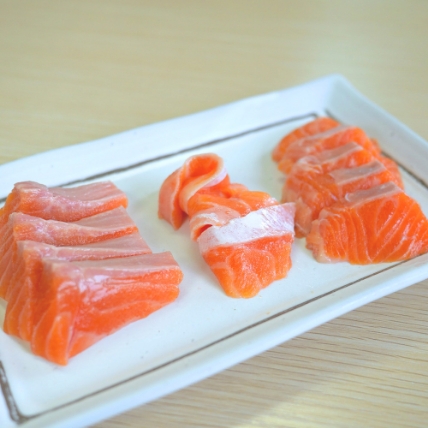
In about two years, the fish grow to roughly 60 cm. Once a week, 700–800 fish are processed by hand using the ikejime method.
“With four people, it goes quickly. Here are some we processed yesterday—would you like to taste?”
First of all, they looked beautiful. The marbling was generous, and the flavor was exceptionally clean.
It’s rare to taste salmon this fresh—what a treat.
After that, I stopped again at Takasu Distillery, and my two dense, wonderful days came to an end.
I discovered new charms of Hokkaido yet again—and fell even more in love with this place.
Next time I stay at Hotel Taisetsu, I think I’ll bring my rebellious teenage son along (laughs).
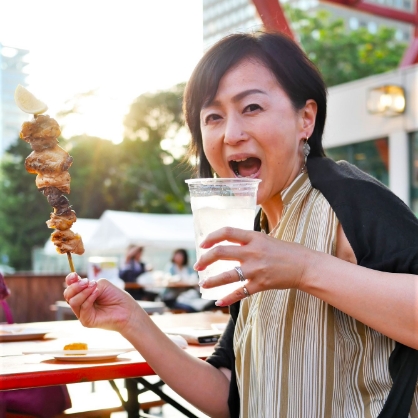
About Mika Osanai
Sapporo native in her early fifties, a devoted lover of a good drink and the mother of a junior high schooler. After working in sales for Recruit’s lifestyle magazine San-Roku-Maru (now Hot Pepper), she spent 15 years as editor-in-chief of the web information site Sapporo100miles, where she wrote “Osanai Mika no Tsubuyaki,” a column on food and travel in Sapporo and Hokkaido. Since November 2022, she has been writing “Osanai Mika ga Iku!” for SAPPORO YARD. She also writes a regular column for HAC’s in-flight magazine and Sitakke’s “A Guide to Solo Drinking.”
